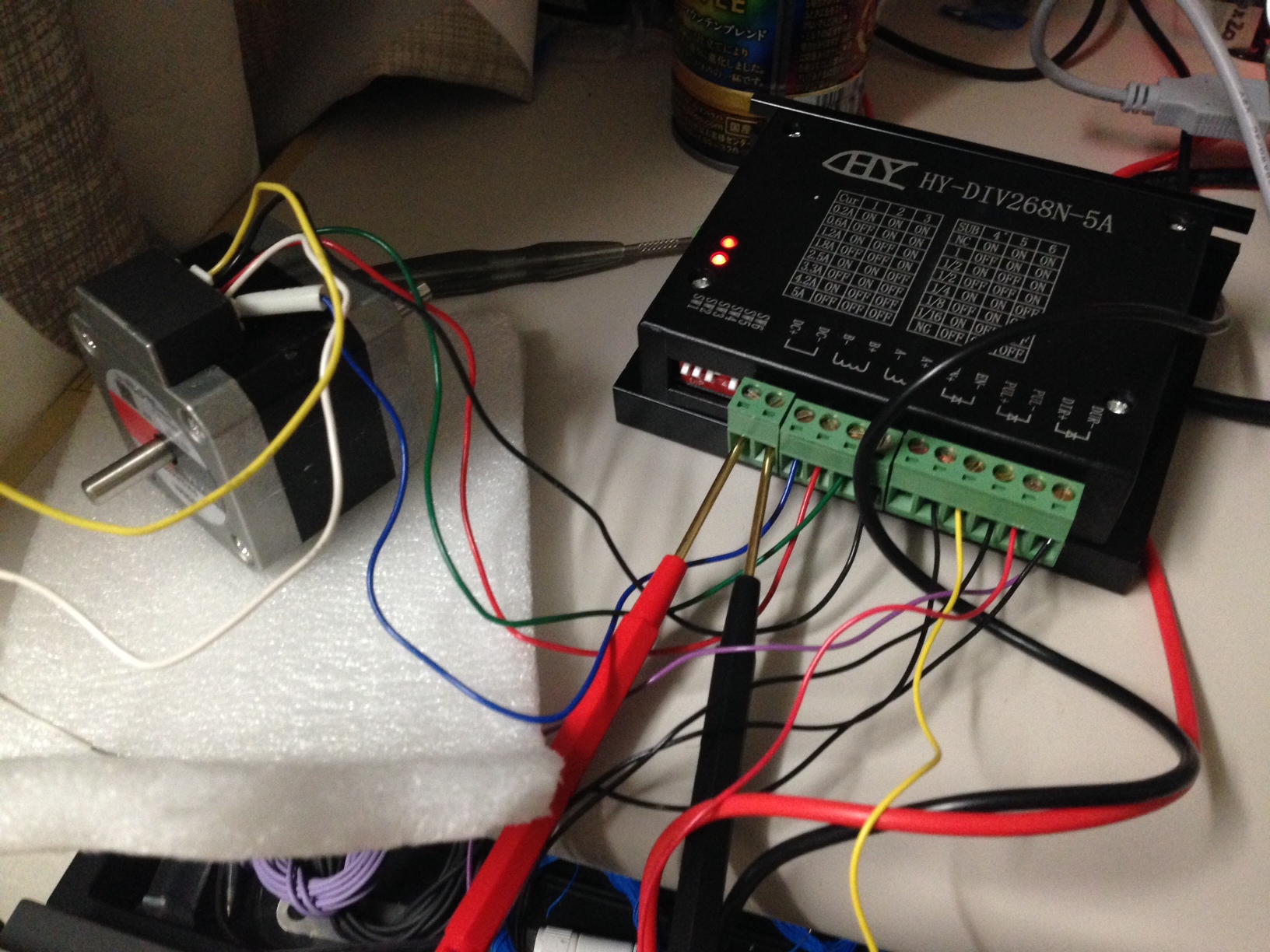Archive for the ‘Uncategorized’ Category.
March 3, 2015, 4:53 am
I’ve previously written about hacking the t5325. But I’ve been interesting in buying one again for another project. In preparation I’ve collected some data on them here.
Manuals
Troubleshooting manual
Getting started (not very useful)
Specs
|
Feature
|
Description
|
|
|
|
|
|
|
|
|
|
|
|
|
|
|
|
|
|
|
|
|
|
Input/output/peripheral Support
|
-
Keyboard: USB keyboard
-
Mouse: USB mouse
-
Printer: Local and/or network printers (RDP, ICA, LPD)
-
Video: DVI-I digital video output (DVI to VGA adapter included)
|
March 3, 2015, 3:26 am
I’ve previously posted about the HY-DIV268N-5A and shown how it can be driven with a function generator and how I used to in my Proxxon CNC Mill conversion.
Using the HY-DIV268N-5A with an Arduino is equally simple. You can use the HY-DIV268N-5A directly, or with the often supplied parallel driver board.
The image below show how the HY-DIV268N-5A should be connected, make sure all the black wires are connected to ground and that the stepper is connected correctly.

Make sure the lights on the HY-DIV268N-5A are correctly illuminated. They wont be if you don’t supply enough voltage/current. Refer to my previous post for specifications.
Once the stepper is correctly connected you should be able to drive the stepper with pulses from the Arduino. Make sure the Enable pin is grounded. And the grounds are common between the driver and the Arduino. All grounds in the system should be connected. Then simply send pulses from the Arduino to the PUL+ pin, pulling DIR+ high/low to change the direction. Use the normal digitalWrite function to do this.
March 3, 2015, 2:36 am
These notes refer to the Linux version of kindlegen.
Using Kindlegen is pretty straight forward, it can process HTML files into mobi format reasonably painlessly, but I did run into a couple of small issues.
I used an HTML file with the following basic format:
1 2 3 4 5 6 7 8 9 10 11 12 13 14 15 16 17 | <html>
<title>BOOKTITLE</title>
<link href="//maxcdn.bootstrapcdn.com/bootstrap/3.3.2/css/bootstrap.min.css" rel="stylesheet">
<meta name="cover" content="/home/user/fullpath/to/cover.png">
<body style="margin-top: 100px; margin-bottom: 100px; margin-right: 50px; margin-left: 50px;" >
<h2>Contents</h2>
<a href="#s1">section1</a><br>
<a href="#s2">section2</a><br>
<a href="#s3">section3</a><br>
<a href="#s4">Footnotes</a><br>
<h2 id="s1">section1</h2>
<p>BLAH BLAH BLAH BLAH <sup><a href="#fn1" id="r1">[1]</a></sup>
<h2 id="s4">Footnotes</h2>
<p id="fn1"><a href="#r1">[1]</a>Interesting stuff</p>
|
Which can then be processed with kindgen simply as:
kindlegen myfile.html
And a mobi file will be generated with the same name as the html file, and in the same directory. Initially I ran into issues processing the cover file and kept getting the error “Cover file not found”. Unlike all the over images in the html file, the meta tag pointing to the cover image has to be the full local path to the file, rather than relative to the html file.
It should also be noted that the CSS linked will be ignored by kindlegen, this makes it easier to process HTML files you’re also using elsewhere.
March 2, 2015, 12:12 am
I’ve been looking at buying an SEM, possibly for shared use and mostly because I’ve seen a couple going very cheaply and having a microscope capable of 100000x magnification intrigues me.
This post will serve a a location for me to keep my notes on SEMs.
Sample/Operation issues
In general you want to minimize the acceleration voltage, to avoid damaging your sample. However this also results in a poorer resolution image. So there are trade offs to be made in acceleration voltage. The JOEL SEM Guide has extensive information on the issues involved. The figure below sums up the issues:

You can see how the applied voltage has effected image resolution in the image below:

You also have similar issues with probe current, minimizing probe current yields sharper images (higher resolution) but you lose sharpness (there’s more noise). High currents can also damage the sample.
The sample angle can also have a significant effect, causing edge effects at certain tilt angles:

Another issue that comes up is sample “charge-up”. If your sample is an insulator a charge can build up on the surface, which will result in poor image quality:

This can be countered against by using a lower voltage, or by coating the sample with a conductive layer (e.g. with a sputtering machine).
EDS/EDAX
Some SEMs come equipped with an EDS system (the most popular appears to be the EDAX). This is a X-ray spectroscopy method mostly used for biological samples. It allows the user to chemically characterize their sample.




